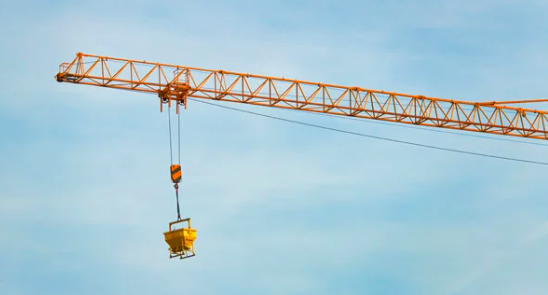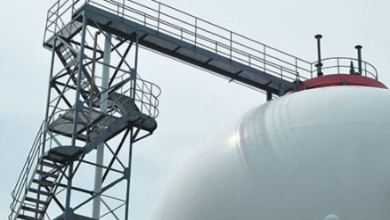Understanding Construction Crane Parts: A Complete Guide to Structure, Function, and Maintenance

In the rapidly evolving world of construction, the use of cranes is vital to streamline heavy lifting, boost productivity, and ensure the safe movement of materials. Among all types of cranes used in modern infrastructure, construction cranes are indispensable on building sites. Behind their towering presence lies a complex assembly of mechanical and electronic systems—each component playing a vital role in stability, lifting capacity, and safety. This article provides a comprehensive overview of construction crane parts, explaining their functionality, significance, and how proper maintenance extends the equipment’s lifespan.
Introduction to Construction Cranes
Regardless of the variety, their purpose remains the same: to lift, transport, and place materials precisely and safely. What distinguishes a high-performance crane from others is not just its capacity, but the durability and efficiency of its internal and external components.
Understanding the construction crane parts is critical for site managers, engineers, maintenance personnel, and even equipment purchasers. A breakdown or failure in any single part can jeopardize the entire operation, making detailed knowledge essential.
Categories of Construction Crane Parts
Construction crane components are typically divided into five categories: structural parts, mechanical suspended mechanical platform components, electrical systems, safety devices, and control mechanisms.
1. Structural Components
a. Mast / Boom / Jib
- These are the primary support structures.
- Constructed from high-tensile steel for strength and flexibility.
b. Counterweights
- Found in both fixed and mobile cranes.
- Used to balance the load and prevent tipping.
- Typically made from concrete or dense metals.
c. Base or Undercarriage
- Provides foundational support.
- Mobile cranes have wheeled or tracked undercarriages for mobility.
2. Mechanical Parts
a. Hoisting Winch
- Responsible for lifting and lowering loads.
- Uses wire ropes or chains wound around a drum.
- Driven by hydraulic or electric motors.
b. Wire Rope / Chain
- These connect the load hook to the winch.
- Must be regularly inspected for wear or fraying.
c. Load Hook & Hook Block
- Engages directly with the load.
- Designed to swivel and include safety latches.
d. Slewing Ring
- Allows the crane’s upper part to rotate.
- Contains gears and bearings for smooth rotation.
3. Electrical and Electronic Components
a. Control Panel
- Central brain of the crane’s electrical system.
- Manages hoisting, slewing, trolley movement, and safety controls.
b. Motors and Drives
- Power all major movements—lifting, rotation, and travel.
- Includes variable frequency drives (VFDs) for smooth speed control.
Read also: Do I Need an Accountant for My Small Business in Sydney?
c. Limit Switches
- Prevent over-hoisting or over-lowering.
- Automatically shut off movement beyond preset thresholds.
d. Lighting and Signal Systems
- Include load indicators, alarms, and status lights for safe operations.
4. Safety Devices
a. Load Moment Indicator (LMI)
- Monitors the load weight and radius.
- Alerts or stops operations if limits are exceeded.
b. Anti-Two Block Device
- Essential to avoid cable breakage and accidents.
c. Emergency Stop Switches
- Instantly disable all functions in case of hazards.
d. Anemometers
- Measure wind speed and alert operators when conditions become unsafe.
5. Control Mechanisms
a. Cabin Controls
- Traditional cranes include operator cabins with joysticks and display screens.
- Ergonomic seating, camera systems, and digital feedback improve precision.
b. Remote Controls
- Many newer cranes offer wireless control systems.
- Enhances safety by allowing operation from a distance.
The Importance of Genuine Construction Crane Parts
Not all parts are created equal. Using genuine, high-quality construction crane parts ensures:
- Improved Safety: Reduces the risk of accidents due to part failure.
- Regulatory Compliance: Meets industry and national standards.
- Cost-Efficiency: Lower replacement frequency and reduced downtime.
Where to Source Construction Crane Parts
You can find replacement or upgrade parts through various channels:
🔹 OEM (Original Equipment Manufacturer)
- Ensures compatibility and quality.
- Often includes warranty coverage.
🔹 Authorized Distributors
- Trusted middlemen with access to certified parts.
- Provide technical support and shipping services.
🔹 Aftermarket Suppliers
- Cost-effective but must be vetted for reliability.
- Choose ISO or CE-certified parts for critical components.
Advances in Crane Component Technology
Modern construction crane parts are evolving to become more intelligent and efficient:
- Smart Sensors: Monitor stress levels and component wear in real-time.
- Telematics Systems: Allow remote diagnostics and predictive maintenance.
- Modular Designs: Make part replacement easier and quicker.
- Energy-Efficient Motors: Reduce fuel consumption or electricity use.
Conclusion: Every Part Counts
The performance and safety of construction cranes depend on the synergy of every individual component. From the boom that lifts tons of concrete to the tiny limit switch that stops a hoist just in time, every piece plays an integral role. Investing in high-quality construction crane parts isn’t just good practice—it’s essential for meeting deadlines, protecting workers, and achieving structural excellence.
Understanding how these parts function, knowing when to replace them, and sourcing them from reputable suppliers is the blueprint to safer, smoother, and smarter construction operations.




